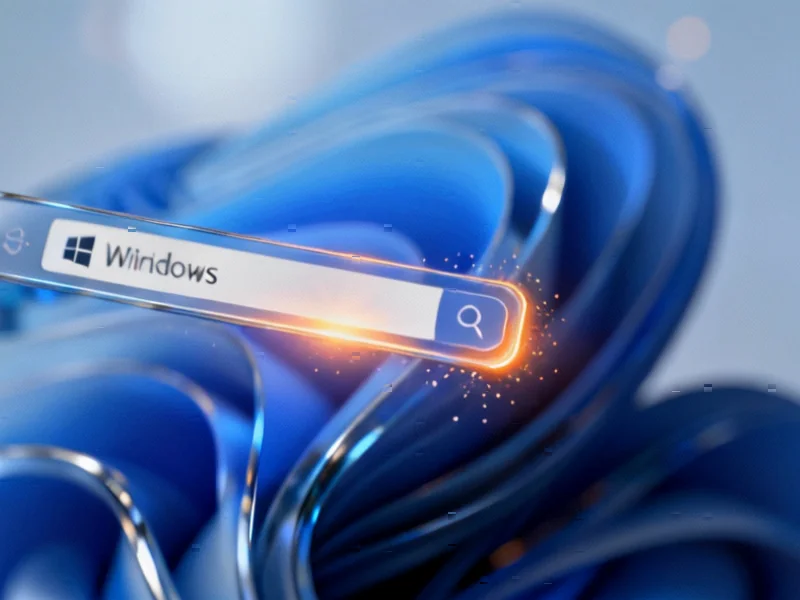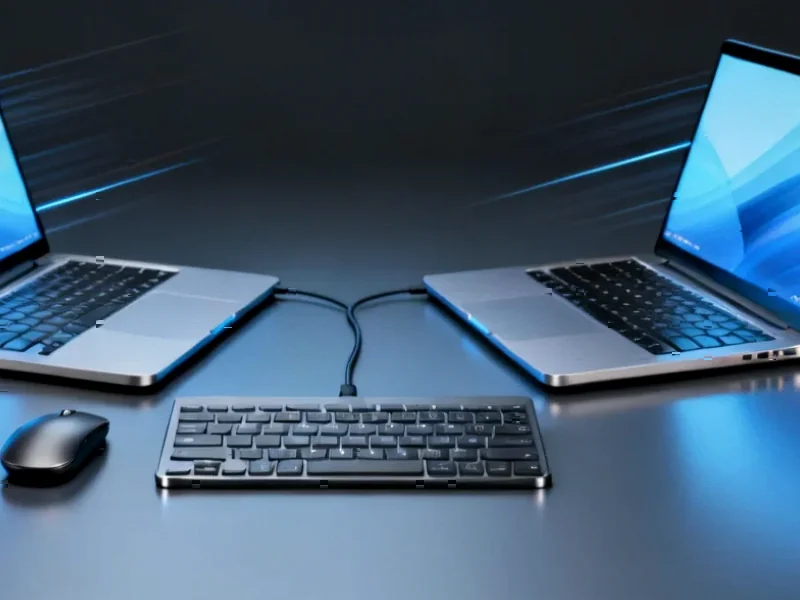Microsoft is pushing forward with significant Windows 11 enhancements, according to recent developer channel releases that showcase the company’s ongoing refinement of its flagship operating system. The latest preview builds, reportedly numbered 26220.6982 for Dev channel and 26120.6982 for Beta channel testers, introduce several practical improvements that could reshape how users interact with their PCs.
Table of Contents
Streamlined Search Experience
Perhaps the most immediately noticeable change involves Windows Search integration with the clipboard. Sources indicate Microsoft is testing a “Copy & Search” feature that automatically detects when users copy text and displays what’s described as a “paste gleam” in the search box. A single click then populates the search field with the copied content, potentially saving users multiple steps when researching information from documents or webpages.
This enhancement builds on Microsoft’s longstanding investment in Windows Search functionality, which has evolved significantly since its introduction. The feature appears designed to compete with similar clipboard-powered search capabilities available in other operating systems and browser extensions.
Proactive System Maintenance
In what analysts suggest could be a significant reliability improvement, Microsoft is introducing proactive memory diagnostics that automatically trigger after system crashes. According to the company’s announcement, when a PC experiences an unexpected restart (known technically as a bugcheck), users may now see a notification recommending a memory scan upon signing back in.
The diagnostic process reportedly takes approximately five minutes during the next reboot and can identify potential memory corruption issues. Industry observers note this represents a shift toward more automated system maintenance, potentially reducing troubleshooting time for average users. Currently, the feature isn’t available on Arm64 devices or systems with certain security configurations, suggesting Microsoft is taking a measured approach to deployment.
Accessibility and Interface Refinements
Voice typing receives meaningful attention in these builds, particularly for users of Copilot+ PCs. Microsoft is adding configurable wait times before voice commands execute, addressing what sources describe as a common frustration for users with varying speech patterns. This granular control could make the feature more accessible to those who speak at different speeds or need additional processing time.
Meanwhile, the Settings application continues its gradual evolution with improved device cards and a restructured About section that provides clearer device information and quicker access to storage settings. The search functionality within Settings now allows scrolling through results directly in the flyout rather than requiring a separate page—another small but meaningful usability improvement.
Broader Platform Enhancements
The updates extend beyond core system components. File Explorer gains previously released hover actions for enterprise customers, while Windows Studio Effects expands camera support beyond Intel-powered Copilot+ PCs to include Snapdragon and AMD systems. Taskbar animations are reportedly being re-released after previous rollout attempts, suggesting Microsoft has addressed whatever issues prompted their temporary withdrawal.
These incremental but substantive improvements reflect Microsoft’s ongoing commitment to refining the Windows 11 experience through its Insider program. The company appears focused on both reliability enhancements and quality-of-life improvements that collectively make the operating system more intuitive and stable.
As with all preview builds, these features may evolve before reaching general availability. Microsoft typically uses this testing phase to gather user feedback and performance data, meaning some capabilities might be modified or removed based on Insider responses. The company’s measured approach to rolling out features across different device types and configurations suggests a careful balancing of innovation against system stability.
Related Articles You May Find Interesting
- Stanford VR Study Shows Tech Can Bridge Climate Change Empathy Gap
- Microsoft’s Next Xbox Takes Cues From ROG Ally, Faces Windows Gaming Challenge
- Manufacturing Cyberattacks Shift from IT Risk to Operational Crisis
- Microsoft Loop Users Discover Powerful AI Pairing with NotebookLM
- Disney-Google Standoff Threatens YouTube TV’s ESPN, ABC Access



